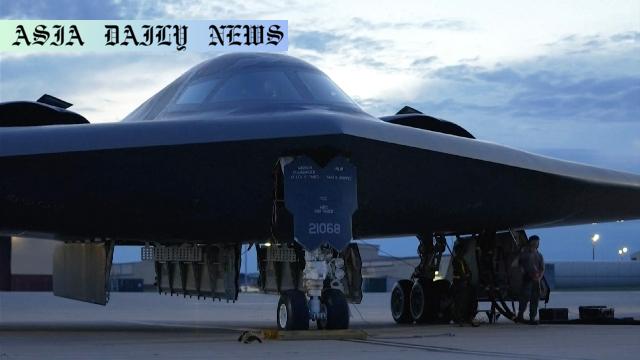B-2 stealth bombers are seen as a symbol of strength and precision. A recent move towards Guam raises strategic military questions.

US Relocates B-2 Stealth Bombers to Strategic Guam Base
The United States Air Force has reportedly mobilized a fleet of B-2 Spirit stealth bombers to the Pacific island of Guam, according to recent media reports. The aircraft, known for their cutting-edge stealth technology and potent “bunker buster” bomb payload capabilities, have departed from Whiteman Air Force Base in Missouri. While speculation runs high, this deployment could serve a dual purpose: demonstrating military strength amid soaring tensions in the Middle East and enhancing readiness in the Pacific to address broader geopolitical challenges.
The Strategic Role of B-2 Bombers Amid Rising Geopolitical Tensions
As tensions escalate globally, particularly surrounding concerns about Iran’s nuclear facilities, the focus on the strategic role of the B-2 bombers cannot be overstated. These powerful weapons, capable of penetrating high-security areas with radar-evading features, offer the United States a decisive military edge. Their potential deployment could serve two objectives: deterring adversaries like Iran while signaling commitment to alliances in Asia. Experts believe this movement indicates a strategy that combines defense with offensive posturing, allowing decision-makers to act decisively in real-time scenarios.
Implications of the Deployment on Global Military Strategies
The movement of stealth bombers to Guam has implications that extend well beyond immediate US intentions. For one, stationing such an elite fleet in a Pacific island signifies a commitment to regional security, particularly in the face of North Korean provocations or potential maritime disputes involving China. Simultaneously, it heightens global awareness that the United States retains the capability and readiness to respond to threats across continents. The world watches closely as new developments unfold, analyzing signals sent through these calculated actions by one of the world’s primary military superpowers.
A Potential Signal to Iran and Other Regions of Interest
What remains unclear is whether this redeployment is directly tied to rising hostilities in the Middle East, particularly given President Donald Trump’s reputed consideration of striking Iranian nuclear establishments. The timing, however, aligns ominously with growing frictions in the region. In the event of military action, B-2 bombers with “bunker buster” capabilities could be essential for crippling underground installations, adding a layer of unpredictability to the evolving power dynamics. This uncertainty alone makes the recent developments a crucial topic in global diplomacy circles.
Commentary
A Deliberate Display of Power
The deployment of B-2 stealth bombers to Guam isn’t just a logistical movement—it’s a message, carefully calibrated to convey strength without words. The timing and destination suggest a multifaceted strategy that touches on both current tensions in the Middle East and existing territorial disputes in the Pacific. By positioning these aircraft at a mid-point in the globe, the United States gains flexibility to project its military presence in vastly different theaters of conflict, without overcommitting to one region.
The Unpredictable Nature of Global Security
In the current geopolitical climate, unpredictability is both a weapon and a liability. On one hand, the ambiguity surrounding the reasons for this relocation keeps adversaries guessing, which could work to the US’s advantage. On the other hand, uncertain global actors may interpret these actions in ways that could trigger unintended consequences. Whether aimed at reassuring allies or deterring adversaries, such military moves underscore the significance of deliberate, well-communicated strategies in today’s interconnected world.
Balancing Global Expectations
For governments and citizens across the globe, this development invites a complex mixture of reassurance and concern. Allies may find comfort in the US’s willingness to mobilize its most advanced assets in response to rising tensions. However, adversaries, particularly those in Iran or China, may view this as a provocation, potentially escalating already simmering conflicts. These calculations highlight the precarious balance the United States must maintain as it seeks to assert its global influence without threatening the fragile web of international relations.


